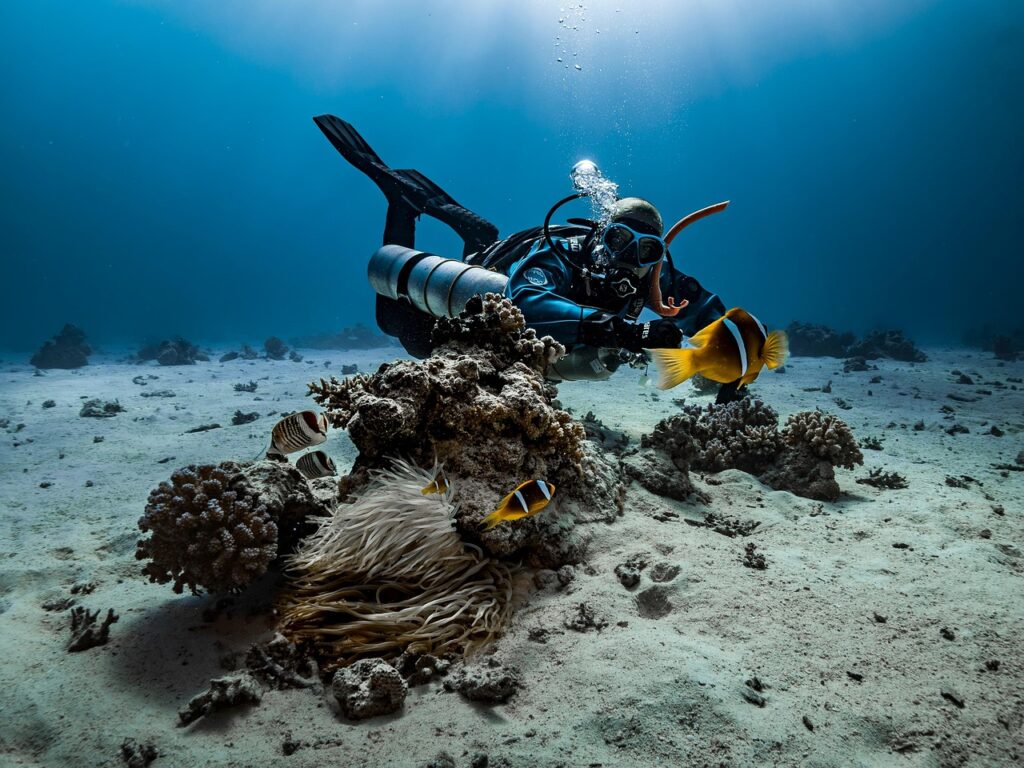
Scuba diving opens a gateway to breathtaking underwater worlds, but it also introduces unique risks—one of the most serious being decompression sickness (DCS), also known as “the bends.” Understanding the principles of decompression and how to manage them is vital for every diver’s safety.
What is Decompression?
When you dive, your body absorbs nitrogen from the breathing gas (usually air) due to the increased pressure underwater. The deeper and longer you stay, the more nitrogen dissolves in your tissues.
Decompression refers to the process of safely eliminating this nitrogen from the body during ascent. If you ascend too quickly, the nitrogen can form bubbles in your bloodstream and tissues, leading to decompression sickness.
How Do You Get Decompression Sickness?
DCS occurs when nitrogen comes out of solution too rapidly and forms bubbles. These bubbles can:
- Block blood vessels
- Compress nerves
- Irritate tissues
Common Causes of DCS:
- Ascending too quickly
- Skipping safety or decompression stops
- Exceeding no-decompression limits
- Diving multiple times a day without adequate surface intervals
- Flying too soon after diving
- Poor hydration or physical condition
Symptoms of Decompression Sickness
Symptoms can appear within minutes or up to 24 hours after a dive. They range from mild to life-threatening:
Mild Symptoms:
- Joint and limb pain (“the bends”)
- Fatigue
- Dizziness or vertigo
- Skin rash or itching
Severe Symptoms:
- Numbness or tingling
- Difficulty breathing
- Chest pain
- Paralysis
- Loss of consciousness
How to Avoid Decompression Sickness
1. Follow Dive Tables or Use a Dive Computer
These tools calculate your no-decompression limits (NDLs) based on depth and time, helping you ascend safely.
2. Ascend Slowly
Never ascend faster than 9–10 meters (30 feet) per minute. A slow ascent gives nitrogen time to leave your tissues gradually.
3. Always Do a Safety Stop
Pause for 3–5 minutes at 5 meters (15 feet), even on no-decompression dives.
4. Plan Your Dive and Dive Your Plan
Stick to your planned depth and time, and factor in contingencies for currents or distractions.
5. Stay Hydrated and Rested
Fatigue and dehydration increase your susceptibility to DCS.
6. Avoid Alcohol and Heavy Exercise Before/After Dives
These can increase bubble formation and impair your body’s ability to eliminate nitrogen.
7. Wait Before Flying
Allow at least 12 hours after a single dive and 18–24 hours after multiple or deep dives before flying or ascending to altitude.
What to Do if Decompression Sickness Occurs
1. Recognize the Symptoms Early
Quick identification is crucial. If you or your buddy experience symptoms, treat it as a medical emergency.
2. Administer 100% Oxygen
Give the affected diver pure oxygen via a demand valve or non-rebreather mask. This helps remove nitrogen from the body more quickly.
3. Keep the Diver Hydrated and Lying Down
If conscious, give fluids (if not contraindicated) and lay them flat to maintain circulation.
4. Evacuate to a Hyperbaric Chamber
Call emergency services or the Divers Alert Network (DAN) immediately. Time to recompression is critical.
5. Do Not Dive Again
Even if symptoms subside, the diver should avoid further dives and seek a full medical evaluation.
Emergency Contacts
- Divers Alert Network (DAN) Emergency Hotline:
📞 +1-919-684-9111 (Worldwide, 24/7) - Local Emergency Services: Know the nearest hyperbaric facility when planning a dive trip.
Conclusion
Scuba diving is a safe and enjoyable activity when approached with respect for the rules of physics and physiology. Understanding decompression—how it works, how to manage it, and what to do when things go wrong—can be the difference between a great dive and a dangerous situation.
By diving conservatively, monitoring your limits, and preparing for emergencies, you can explore the underwater world with confidence and safety.